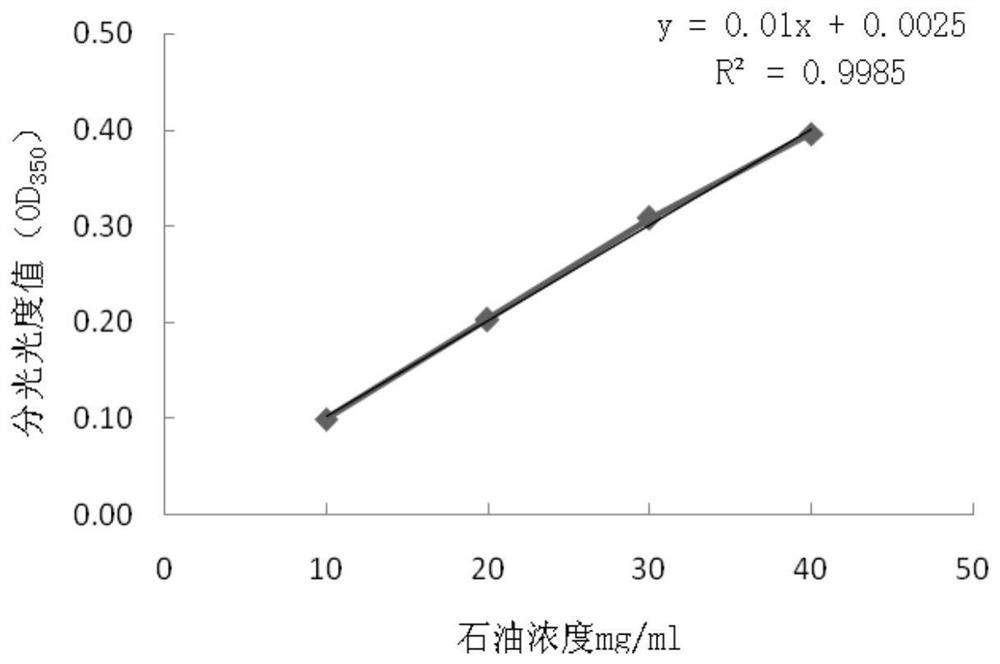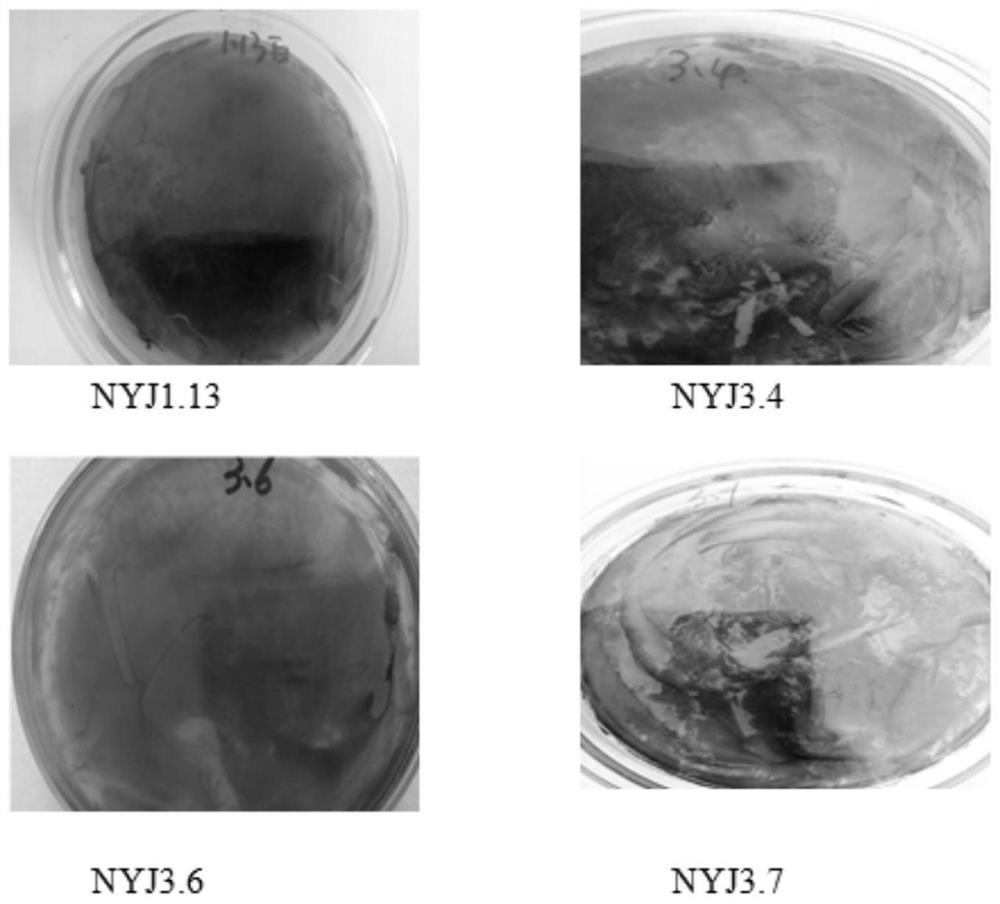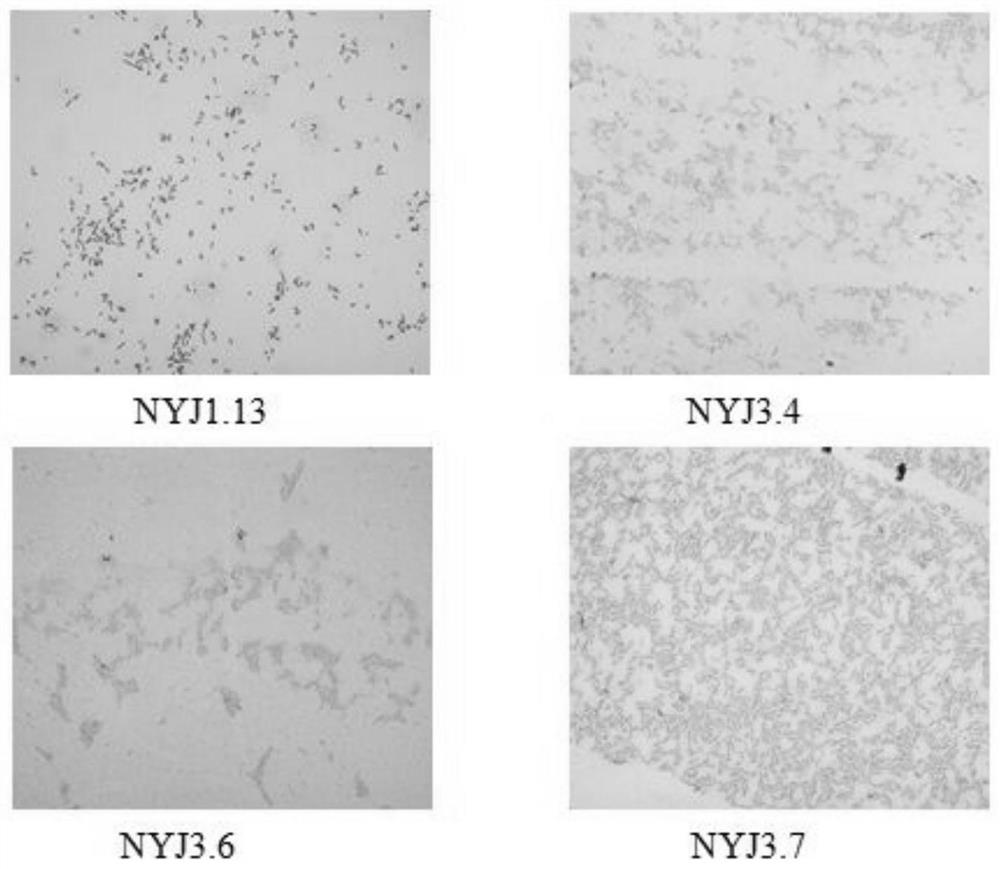A Strain of Pseudomonas-like Alcaligenes nyj3.6 and Its Application
A technology of NYJ3.6 and Pseudomonas, applied in the field of microorganisms, can solve the problems of inconvenient recovery of immobilized carriers, and achieve the effect of promoting oil degradation and solving oil pollution
- Summary
- Abstract
- Description
- Claims
- Application Information
AI Technical Summary
Problems solved by technology
Method used
Image
Examples
Embodiment 1
[0030] Embodiment 1: Illustrate the separation, purification and screening of strains:
[0031] From the petroleum-contaminated soil in Shengli Oilfield, Bohai Sea, Liaoning, weighed three different degrees of petroleum-contaminated soil, and inoculated them into 90 mL of sterilized inorganic salt medium by aseptic operation, at 37 °C and 150 r / min, Shake the culture for 7 days, take 10 mL of the enriched liquid in a new crude oil medium, and culture continuously for 4 to 5 times. The crude oil medium configuration method is as follows: take 0.2 g of crude oil and sterilize it in 100 mL of inorganic salt medium. The specific parameters of pH, salinity and oil content of the medium during the acclimation process are as shown in Table 1:
[0032] Table 1 Parameter settings in the domestication process
[0033]
[0034] After the acclimatization is completed, take an appropriate amount of culture solution and spread it on the LB solid plate. After about 24 hours, colonies gro...
Embodiment 2
[0035] Embodiment 2: the degradation rate of different isolated and purified bacterial strains to petroleum:
[0036] Pre-freeze the plate of the bacterial suspension in a -16°C refrigerator for 4 hours, then transfer it to a vacuum freeze dryer at a vacuum degree of 54-60Pa, and dry at -45°C for 48 hours to obtain dry bacteria powder. Add 0.2 g of crude oil to 100 mL of inorganic salt medium for high-temperature sterilization to prepare crude oil medium, and add the prepared dried bacteria powder after cooling. Add the dried bacteria powder to the sterilized crude oil medium at an inoculum amount of 0.2g dry powder per 100mL medium, make three groups for each strain, and have three bottles of crude oil medium without bacteria as the blank control, and keep the temperature on the shaker Shake culture for 7 days to observe the oil degradation effect of the strain and measure the degradation rate.
[0037] Add 10 to 20 mL of petroleum ether with a boiling range of 60 to 90°C to...
Embodiment 3
[0045] Embodiment 3: Description of the morphology and biochemical characteristics of bacterial strains:
[0046] Observe the morphological characteristics such as the edge shape, size, color, uplift, transparency and other morphological characteristics of the colonies on the medium plate of the 4 high-efficiency petroleum-degrading bacteria NYJ1.13, NYJ3.4, NYJ3.6, and NYJ3.7 obtained through isolation and screening. Refer to Berger Bacterial smears were prepared according to the Handbook of Bacteria Classification and Identification, Gram staining, and individual shape and size were observed under a microscope. The colony morphology of the four strains is shown in Table 3. Using traditional bacterial identification methods and bacterial biochemical identification tubes (Hangzhou Microbiology Co., Ltd.) to systematically detect the physical and chemical characteristics of petroleum-degrading bacteria, the biochemical identification tubes were used to identify petroleum-degradi...
PUM
| Property | Measurement | Unit |
|---|---|---|
| particle size (mesh) | aaaaa | aaaaa |
| particle size (mesh) | aaaaa | aaaaa |
Abstract
Description
Claims
Application Information
 Login to View More
Login to View More - R&D
- Intellectual Property
- Life Sciences
- Materials
- Tech Scout
- Unparalleled Data Quality
- Higher Quality Content
- 60% Fewer Hallucinations
Browse by: Latest US Patents, China's latest patents, Technical Efficacy Thesaurus, Application Domain, Technology Topic, Popular Technical Reports.
© 2025 PatSnap. All rights reserved.Legal|Privacy policy|Modern Slavery Act Transparency Statement|Sitemap|About US| Contact US: help@patsnap.com



